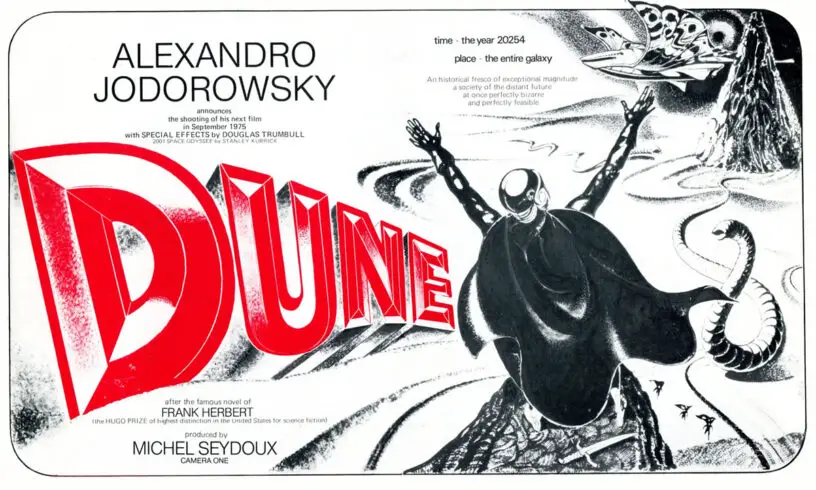We’ve written about the first failed attempt to create a Dune movie, however Alejandro Jodorowsky’s, likewise unsuccessful, project is undoubtedly the most famous and frequently cited of these endeavors. Almost four decades later, in 2013, it even inspired the feature-length documentary Jodorowsky’s Dune.
Many a book or article that mentions Jodorowsky’s failed attempt to film Dune invariably remarks on its supposed lengthy running time, even those from major publications such as The Guardian or Esquire.
But where does this reported length originate? In this article we explore the history of this claim and if there’s existing evidence to support it.
The Dune Scripts
The first mention I can find comes from Frank Herbert himself, when he was interviewed by Starlog magazine in 1983 about the then upcoming film adaptation by David Lynch. The interview starts with a discussion on the prior two major attempts to bring the novel to the screen, those of Arthur P. Jacobs and Alejandro Jodorowsky.
… there was Alejandro Jodorowsky, with a script and a storyboard which I am sure couldn’t have been done in less than 10 hours.
Frank Herbert – Starlog #66 (January 1983)

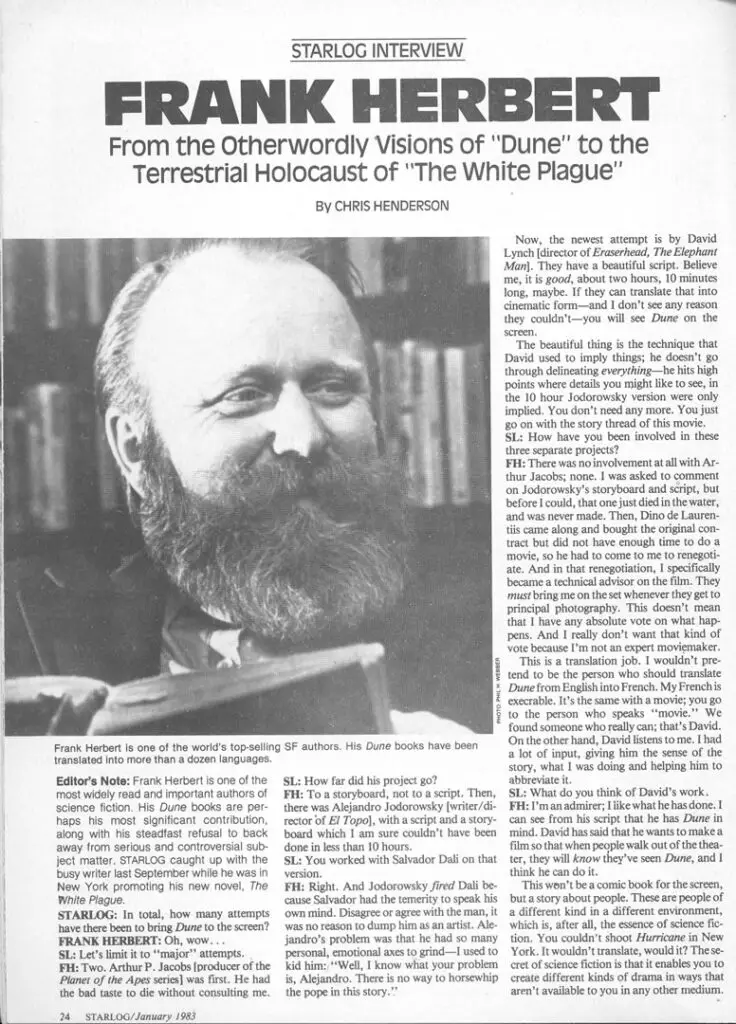
The rule of thumb for film scripts is that they will average out to about a minute of screen time per page, so a 10-hour movie would require a 600-page script. There are of course exceptions to this rule, with, for example, the 94-page script for Tár (2022) resulting in a 158-minute movie.
I’m aware of three different drafts of the script for Jodorowsky’s Dune; what runtime can we estimate for them?
1: The “Fake” Script
In March 2015 a script appeared on eBay claiming to be an early draft of Jodorowsky’s Dune. Jodorowsky himself dismissed it as “un falso guión” (“a fake script“), however this turned out not the be the case given the major similarities with other known scripts.
.@sstofflet Es un falso guión con un dibujo idiota.
— Alejandro Jodorowsky (@alejodorowsky) March 30, 2015
The script is 305 pages long, however 76 pages are of illustrations resulting in a 229-page written script. So that would equate to just under four hours in length, although its text formatting leaves a lot of empty space.
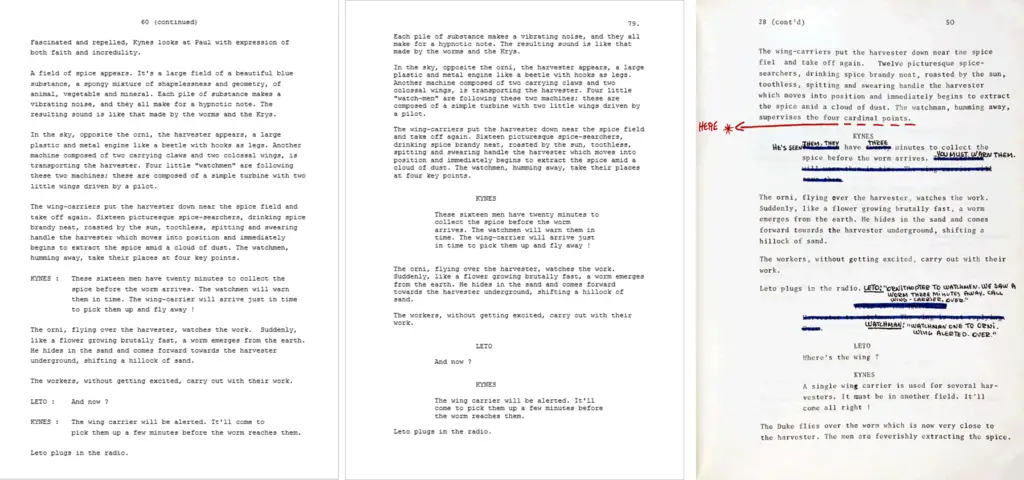
2: The Ulule Script
In August 2018, official reproduction copies of the Jodorowsky’s Dune script were sent out to backers of Jodorowsky’s “Psychomagic, an art that heals” project on crowdfunding platform Ulule. This script is almost identical to aforementioned “fake” script, with a few scenes removed (including the infamous “2,000 defecating Harkonnens” scene) and some of the wording toned down. Despite these reductions, the script is slightly longer at 238 pages. However, the page dimensions are a little shallow, and it seems closer to 200 pages when reformatted into a more common script page size.
3: The Chris Foss Script
In November 2022, auction house Christie’s listed a copy of the Jodorowsky’s Dune script from the personal collection of Chris Foss. Stated as containing 167 pages, this is significantly shorter than the early drafts, with the removal of the lengthy “History of Humanity” prologue aiding greatly in that reduction.
167 pages equates to just two hours and 47 minutes, which even with credits would still likely have been under three hours.
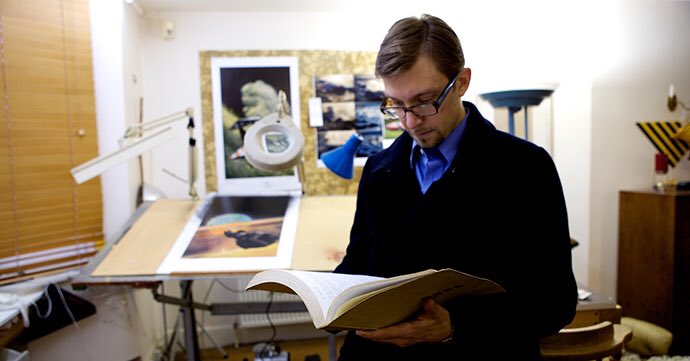
The Dune Bible
Dan O’Bannon was hired for the Special Effect work and introduced Jodorowsky to storyboarding – an important aspect in SFX. Jodorowsky liked the idea so much he decided to storyboard the entire movie.
I introduced Jodorowsky to the concept of the storyboard, which was unfamiliar to him. He had this phenomenal artist, Jean Giraud, the foremost comic book artist in France…likeable and brilliant…a brilliant artist. And he worked faster than any artist I’d ever seen. He was ideal for the storyboard. Jodorowsky had hired him as the first designer on the picture. So right away I said, ‘You’ll have to storyboard all the special effects sequences, so we can know what we have to shoot.’ Well, he took to it with such relish that he ended up storyboarding the entire film, every shot, thousands of drawings.
Dan O’Bannon – Phobos #1 (Summer 1977)
Together Jodorowsky and Jean Giraud (a.k.a. Moebius) would storyboard the entire movie, with Jodorowsky explaining scenes from the script and Moebius creating the drawings.
At 8:00 we come; we prepare everything. I think at 9:30 we start to ‘shoot.’ I made the picture with drawings… I describe what I wanted. And he immediately, he brrrrrrrrr … quick, more than a computer. He was incredible.
Alejandro Jodorowsky – Jodorowsky’s Dune (2013)
Like the script, the storyboards went through a series of reworking, with a complete set of final drawings for the 90 scenes, as well as designs for sets, spaceships, and costumes compiled into a Dune “bible”. The original “fake” script contained 154 scenes, so over 40% of the scenes have been removed or combined, an action which doesn’t reconcile with the concept that Jodorowsky was completely unconcerned with the film’s length.
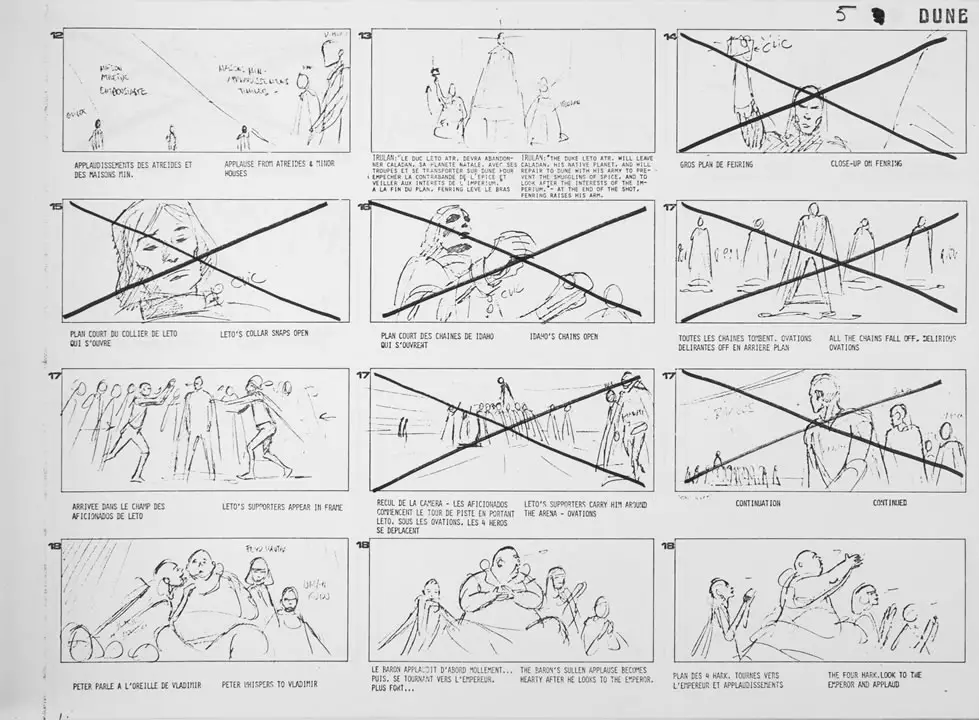
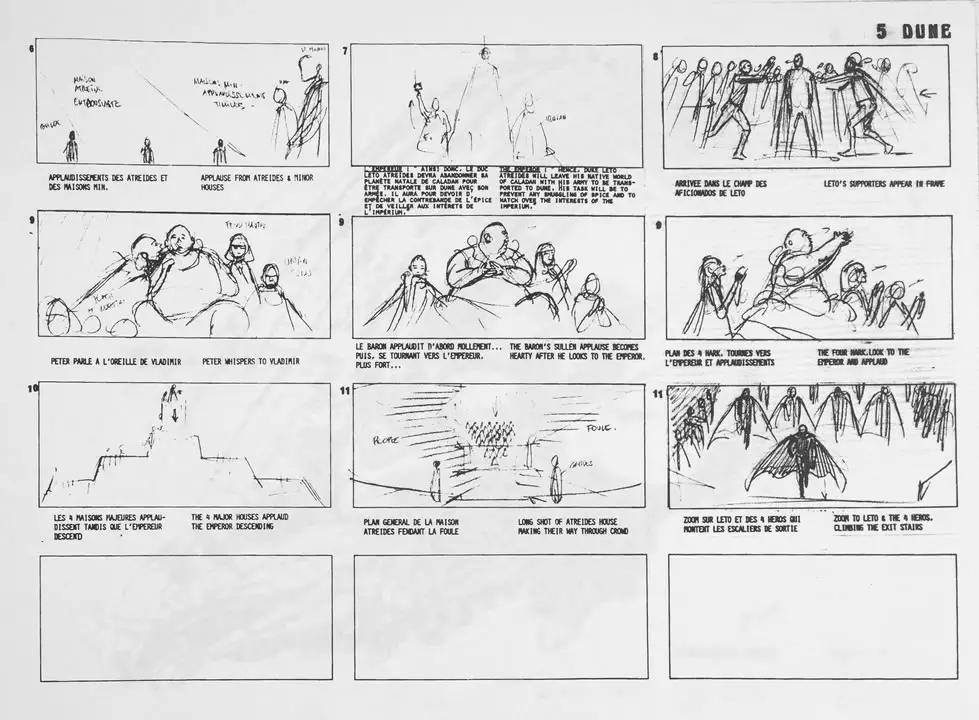
The Dune “bible” exists in two known forms, a giant blue book (8.125″ x 11.5″ x 3″) printed on high quality paper that was distributed to movie studios in the mid-1970s, and a thinner (18″ x 12″ x 2″) red version created in the 1980s for a handful of people connected with the project—effectively a lower quality reproduction of the blue bible.
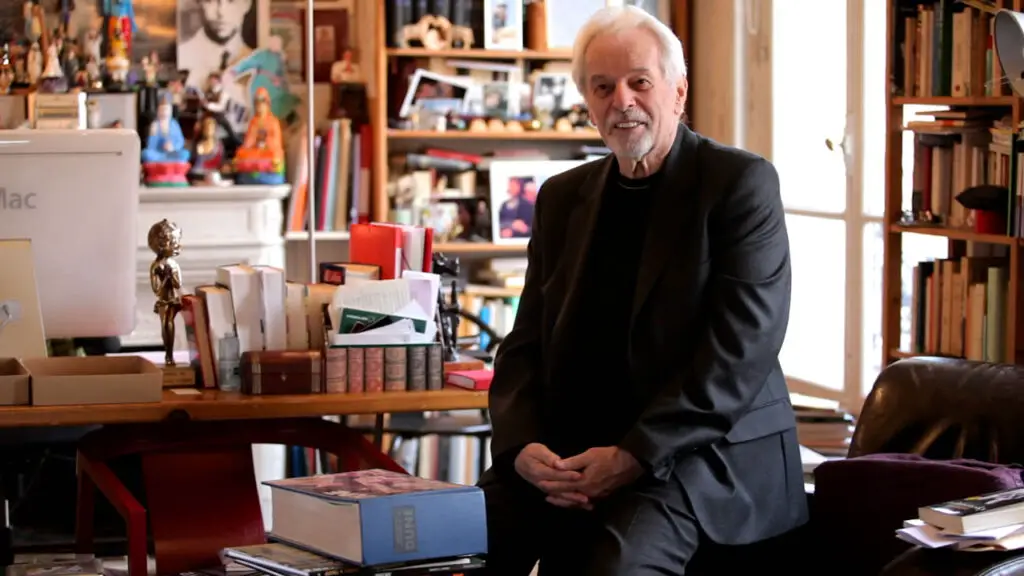
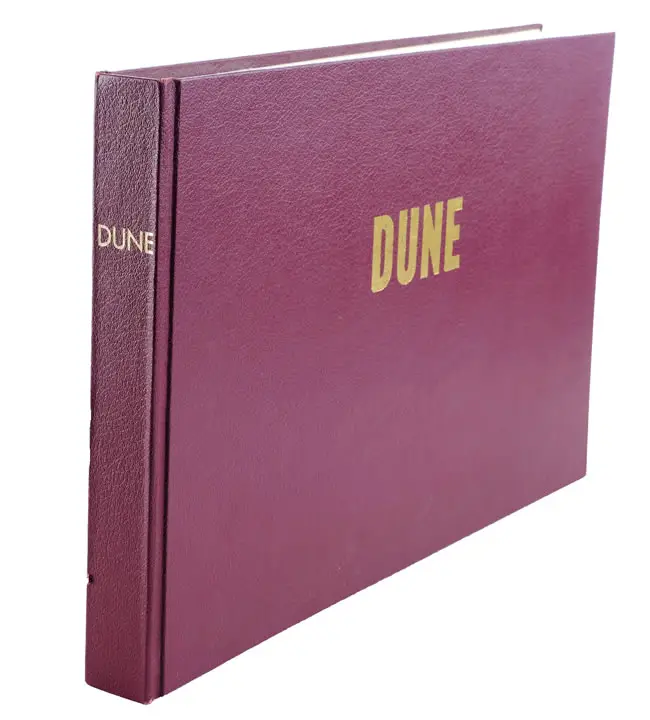
Herbert is quoted as saying the script was “the size of a phone book“, but in a New York Times article Herbert seems to have been basing his estimated length of the movie on the size of the giant blue Dune bible.
I saw the storyboard of the director they hired, Alejandro Jodorowsky, it would have made a nine-hour movie.
Frank Herbert – New York Times (September 1983)
Jodorowsky wanted to create his own version of Dune and went out of his way to minimize Herbert’s involvement.
I didn’t want [Herbert] as a technical adviser… I did everything to keep him away from the project…”
Alejandro Jodorowsky – Metal Hurlant #107 (1985)
If Herbert was basing the length of the movie based on the thickness of the storyboards, without any explanation from Jodorowsky, it is easy to see how he could have massively over-estimated the running time.
Straight from the Sandworm’s Mouth
What does Jodorowsky himself say about the running time?
They asked me to make a picture one hour and a half, for the theaters. And myself, ‘No, why the time?’ I will make a picture… of 12 hours! Or 20 hours!
Alejandro Jodorowsky – Jodorowsky’s Dune (2013)
In the context of the documentary this seems to be more a statement of the importance of movies being an art form, free from commercial constraints, rather than a claim that the film would have been 20 hours long.
However, in an interview with IndieWire after the release of the documentary Jodorowsky claims that he was ahead of his time in his ambitions:
At that time, they said I was crazy because I wanted to make a movie that was 14 or 16 hours. But now people do it. There are three — ‘Hobbit 1’, ‘Hobbit 2’, ‘Hobbit 3’. Everything I wanted to do is possible to do today.
Alejandro Jodorowsky – IndieWire (March 2014)
What we need is Jodorowsky’s views closer to the original project. In September 1984, French science fiction magazine L’Ecran Fantastique ran a translated version of the Starlog #66 interview, which came to the attention of Jodorowsky, who perceived Herbert’s comments as a personal attack and responded to both Herbert and L’Ecran Fantastique the following month.
When you say that my version could not have lasted less than ten hours on the screen – and why not? – you show your ignorance of the project. I had signed a contract in which I promised to provide a screenplay from which we could shoot a three-hour film and a six-part series for television. The version for the big screen would have lasted three hours, no more!
Alejandro Jodorowsky – L’Ecran Fantastique #49 (October 1984)
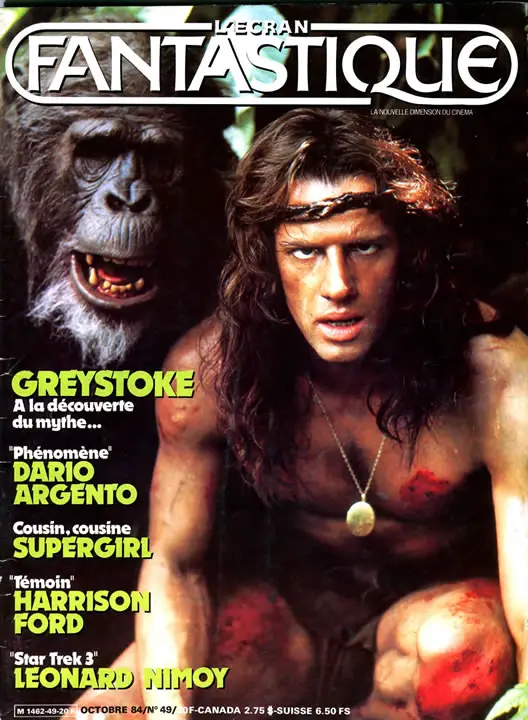
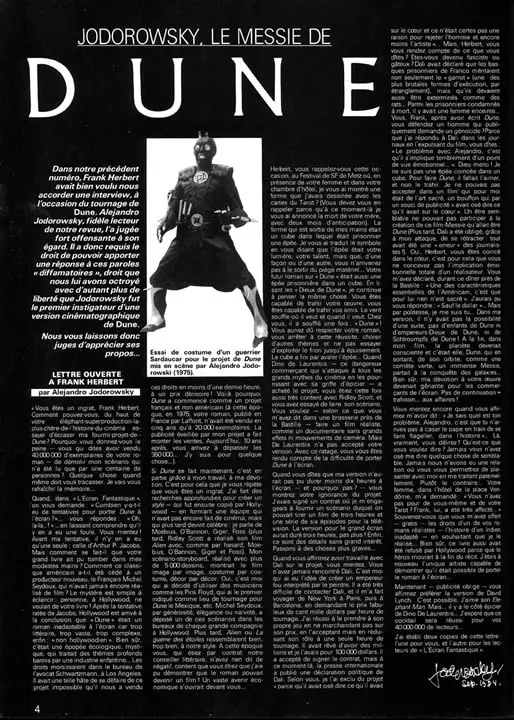
The comment about a six-part miniseries is intriguing, could it have divided the film into six 30-minute episodes, or perhaps included more footage in a similar fashion to Das Boot (1981), which was released as a 150-minute movie, and a 300-minute miniseries? Maybe the “History of Humanity” prologue could have been used to create a prequel miniseries. A sequel would have been unlikely though, given that Paul dies at the end of Jodorowsky’s film!
But it is the film itself we are concerning ourselves with, and Jodorowsky clearly states the film would be no longer than three hours, fitting extremely well with our estimate based on the scripts.
Summary
Even if we had a final shooting script, we would never know exactly how long Jodorowsky’s Dune would have been, considering inevitable changes during filming and editing. However, given the information that we do have, I feel certain that a 10-14 hour running time is nothing more than hyperbole—even if it has been accepted by the director himself in recent years.
In any case, be it three hours or 13 hours, I would still love to have seen Jodorowsky’s vision of Dune on the big screen. What do you think?


